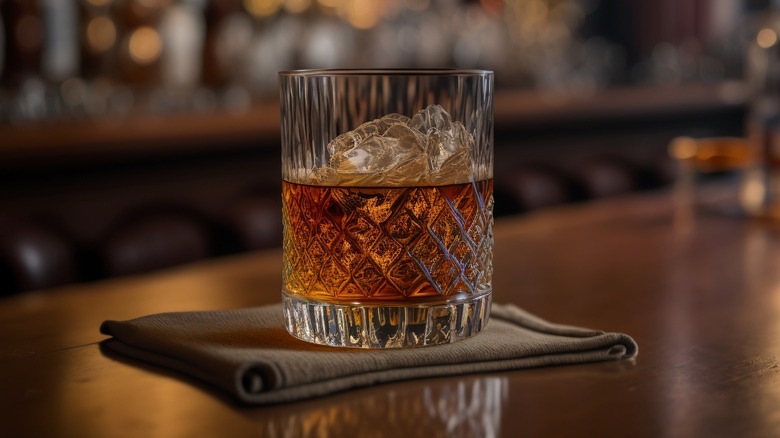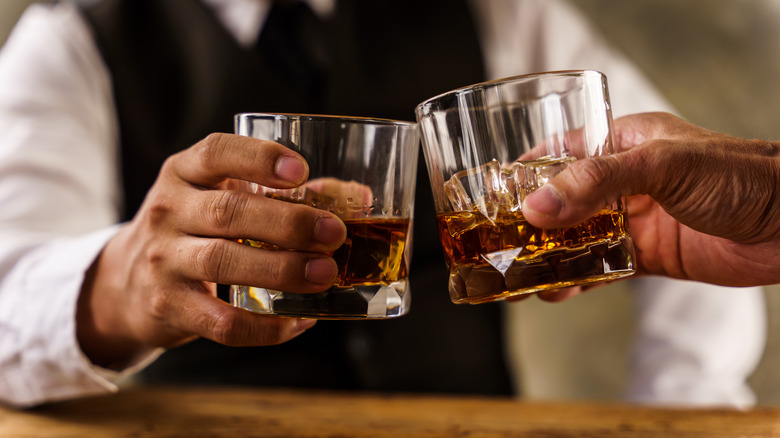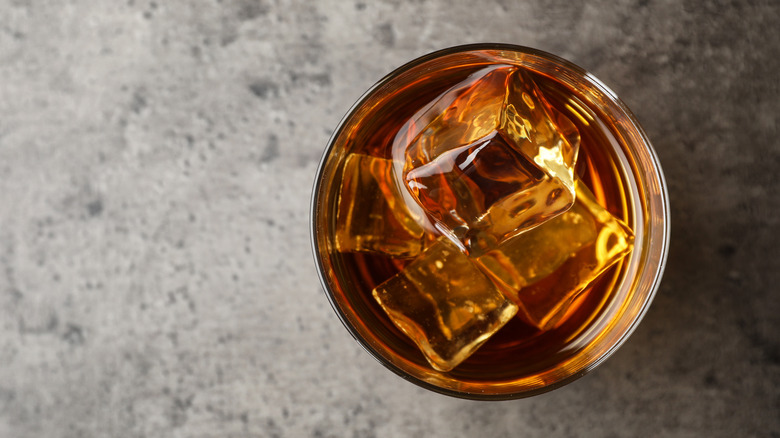What Does Whiskey Burn Actually Mean?
Whiskey isn't the only liquor associated with a burning sensation; all types of liquor can elicit this response. This happens because the VR1 receptors in our mouth and throat are constantly on alert for potential threats, signaling us about substances that could harm us. These are the receptors that warn us when we eat chili peppers, for example, or when our coffee is too hot to drink.
No, alcohol doesn't actually burn, but its effects on the body — specifically, the way it dries out our mucus membranes and mimics a burning sensation — deceive these receptors. They consequently lower their typical threshold for sending a burning sensation alert to the brain. For example, these receptors usually warn us not to drink scalding hot coffee that is 108 degrees Fahrenheit or higher by sending out pain signals. However, when it comes to liquor, they lower that threshold to just 93 degrees Fahrenheit, even though whiskey served neat is at room temperature. This creates a sort of phantom reaction.
The higher the proof, or alcohol by volume (ABV), of the liquor, the more intense the so-called whiskey burn will be. Additionally, alcohol dilates our blood vessels, a physiological response that accounts for the warmth we feel as it goes down the proverbial hatch and settles in our stomach.
Why some whiskeys are smoother than others
Whiskies fall along a range between smooth and burning, with the relative smoothness or lack thereof mainly determined by the decisions distillers make during the production process. While alcohol content is a major contributor to whiskey burn, other production factors — such as the mash bill and aging time — also matter.
For example, bourbon must, by law, be made from a majority of corn, a grain that is somewhat sweeter than rye. This sweetness can soften some of the harshness associated with whiskey burn. While malted barley, rye, and wheat may still be included in the mash bill — which refers to the blend of grains utilized in the production of bourbon — the percentage of corn in bourbon ranges from the minimum required 51% to as high as 100% in certain recipes. Higher percentages of corn produce a sweeter-tasting whiskey.
Barrel aging is another production process that can help mitigate whiskey burn. The level of smoothness is dependent on the length of aging; as a general rule, the longer a whiskey is aged, the smoother it will be.
Recommended ways to soothe whiskey burn
The way we drink can also affect the intensity of the whiskey burn. One method to lessen this sensation is by lowering the temperature of the liquor. Serving whiskey over ice — chilled or on the rocks — can make a significant difference. Another simple technique is to exhale before taking a sip, which disperses alcohol vapors and prevents them from irritating your mucus membranes. The proper technique is to exhale partially, leaving some air in your lungs until after you've taken a drink, and then exhale again. The sensation of whiskey burn should magically lessen.
Taking small sips also helps. It's logical, right? The less whiskey you have in your mouth, the less your taste receptors will be alarmed by any perceived burn. Spreading the whiskey over a greater area of your tongue and mouth also assists in dissipating the sensation of burn.
For whiskey connoisseurs, these methods may be more preferable for mitigating whiskey burn than the obvious alternative of diluting the drink with ingredients like soda water. However, cutting your whiskey with a splash of water, soda, or your favorite mixer is also a viable option.



